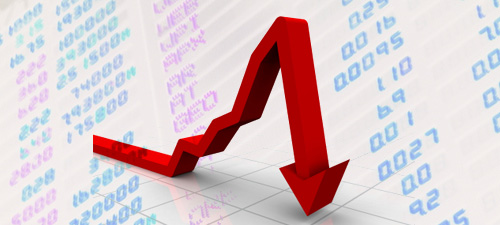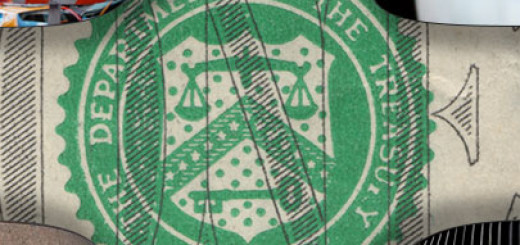The markets know that the piper must be paid.
Click here to listen to the broadcast of You Tell Me on KTBB AM & FM, Friday, August 5, 2011.
The Dow fell by 513 points yesterday, more than four percent, capping a streak that saw the Dow lose value in nine of the past ten sessions. All of the gains that equity markets posted since the start of the year have been erased in just the last ten business days. This week has been the worst for the Dow since December of 2008. The S&P 500 and the NASDAQ, the two other U.S. stock market indices, have suffered similarly.
It’s as if the markets know, following the rancorous debate over raising the U.S. debt ceiling, that this time it’s different.
Those who know about such things cite two reasons for the market’s dismal performance. They point to the financial turmoil in Europe, as the European Union continues to be buffeted by member nations that are struggling to cope with ruinous levels of debt, leading to fear of a debt contagion that will severely strain world financial markets. And they point to a growing body of evidence suggesting that the so-called economic recovery in the United States has stalled.
I would add that the apparent inability of the ruling class in the United States to effectively address crippling levels of debt and spending can’t be doing anything to help investor confidence.
Which brings me to say that I believe that all of these factors – the European debt crisis, extremely weak growth in the United States, out-of-control U.S. borrowing and an ineffectual political class – are of a piece.
The piper has arrived in Europe, seeking to be paid for 60 years of social entitlement spending. Everyone knows that the piper’s next stop is the United States.
Too many people in Europe and in America who produce nothing are being supported by too few who do. The shortfall is covered by borrowing.
Borrowing tomorrow’s economic output to pay for today’s social welfare can only go on for so long. As economist Herbert Stein, the father of pundit and game show host Ben Stein once said, “That which cannot go on forever will stop.”
And so it will.
Just as Europe can no longer afford its social model, we in the United States can no longer afford ours.
So expect to see, amid howls of protest, a change in the eligibility age for retirement and for receiving Social Security benefits. A system that was designed in the early 20th century, when most people didn’t live to draw benefits, cannot remain unchanged in the 21st century when most people draw benefits for fifteen years or more.
Expect that food stamp eligibility will be drastically altered, again amid howls of protest. The majority of the one-in-six households that use money from taxpayers to subsidize food purchases for the purpose of freeing up cash for elective purchases cannot continue doing so. The 19th century poverty of Charles Dickens, complete with drawn, dirty faces and children begging for food, has been replaced by the 21st century poverty of modern America, complete with air conditioning, iPods, satellite TV and a car in the driveway. America can no longer pay for this definition of poverty.
Expect that businesses and industries that survive on government subsidy will either adapt or vanish. One example is farm subsidies. For eight decades, taxpayers have been paying farmers to either grow or not grow certain crops, based solely upon the political skills of farm state politicians. These subsidies will end. As will subsidies for things like wind power, solar power, electric cars, ethanol and other liberal castles in the sky. Goods and services that rely on government subsidy will have to survive on their own or vanish, as the invisible hand of the market will rationally determine.
So it will be throughout the economy. The fanciful promises of vote-grubbing politicians will be replaced by the reality of markets and demographics. The process has already begun.
It is the inevitable messiness and uncertainty of dismantling the modern welfare state that is causing the equity markets to tank. Until Western governments fully come to grips with the inevitability of changing their ways, investors are going to minimize risk. Thus the selloff of the stock market over the past ten days.
The markets know what’s coming. Soon everyone will.









Face it America…we’ve been hosed. We begged that our Senators and Representatives hold the line and tell Team Obama, “NO MORE”! But, they caved in and we will suffer for it. Of course the Stock Market took a nose dive…we have no growth, we spend like there is no tomorrow and our leaders think Cloward and Piven is a way of life. They want a larger entitlement class…”let Uncle Sugar take care of you while we kill the middle class” seems to be the goal.
The Stock Market is a joke anyway…the remove the negative input to the Dow Jones…they replace it with winners. Instead of getting a true picture, we get the sanitized and feel good numbers. Isn’t it funny that the ONLY Dow Jones member that remains on the list constantly is General Electric…all others are add ons after down side stocks are replaced.
America is in trouble…we are in a downward spiral and will remain so until Washington gets off the corporate backs and allows Capitalsim to right these wrongs.
Paul, I sincerely hope your analysis is correct. Furthermore, I pray that it will occur sooner than later.
An excellent analysis of our current predicament. Too many citizens still are not paying attention. And too many expect more from government than government can deliver. Whatever comes our way, we have only ourselves to blame.
well, my 401k tanked – not surprised after congress caved and then went on vacation – amused that dc media “did not know what to do with those teaparty folks” – seems they voted the way the people who elected them wanted them to, were not worried about getting re-elected, and could not be bribed with promises of pork to their districts – to quote the media newscaster, “they just do not under-stand how things work in washington, dc” (actually they DO under-stand, and are trying to change it)
obama promised TRANSPARENCY, C-SPAN cameras in closed door meeting,
and all bills posted 48/72 hours on internet before voting process
I have NOT seen any of this – have you – and media will NOT call him on his broken promises, just lets him get away with whatever he wants – oh well
RICK, you said it quite nicely, forgot to add thanks in previous comment
This communist, marxist, socialist or the hybrid “progressives” has had a strong toe-hold in our government since the days of FDR. We have teetered back and forth ever since. Ike repealed some of the socialist programs but not near enough of them! You can look at it this way…cancer took root during FDR and Ike did surgery to remove the cancer, but he left parts of it intact, not removing ALL of it. It has been a slow growing cancer that has been ignored by most, boogered at by a few, but never dealt with seriously by anyone. Now the cancer is to a point it can not be ignored any longer because it has spread throughout the body. At this stage of cancer, what can we do? For all our knowledge and medical prowness, the cancer is beyond surgery, beyond radiation…and we all know what happens when we reach this point. Cancer usually ends up killing it’s host. Only divine intervention can save us now.
I love your phrase, “liberal castles in the sky”. I hope and pray that the American people that remain as “contributors” to our society (as opposed to the dependent class) have had a new awakening and are determined to STOP the agenda of the subversive Marxist (liberty starving) economics and regulations that have been at war with our Capitalistic society. Retooling the Republican leadership with fearless and determined Constitutional conservatives is paramount in the next election.
It is too bad that barack doesn’t have the honesty or intelligence of Japanese Admiral Yamamoto who said (after his attack on Pearl Harbor), “I fear all we have done is to awaken a sleeping giant and fill him with a terrible resolve.”